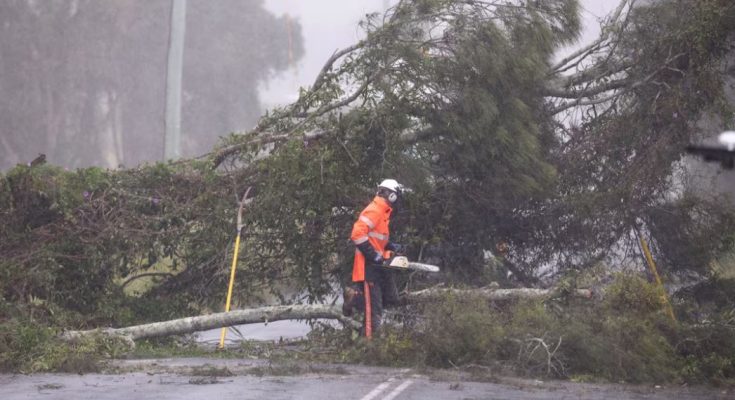SYDNEY, March 6 (Reuters) – Cyclone Alfred stalled off Australia’s east coast on Thursday as officials shut airports, schools and public transport while residents stockpiled supplies and sandbagged homes against flooding expected when the category-two storm hits.
The storm is now likely to make landfall by Saturday morning near Brisbane, Australia’s third-most populous city, the Bureau of Meteorology said in its latest update, compared with a prior projection of landfall by early Friday.
The storm’s destructive reach will stretch across the border regions of the states of Queensland and New South Wales, the bureau said, bringing heavy rain, flooding and damaging wind.
“Alfred is behaving at the moment like a completely unwanted houseguest. It’s told us it’s going to be late but linger even longer,” New South Wales Premier Chris Minns told reporters.
“Unfortunately that means the window for destruction in our community – heavy rains, winds, powerful surf – is longer than we would have otherwise liked.”
Storm warnings on Thursday stretched for more than 500 kms (311 miles) across the northeast coast, as huge waves whipped up by the cyclone eroded beaches, and officials urged residents in flood-prone areas to evacuate soon.
Prime Minister Anthony Albanese said the defence force would be ready to support emergency services.

Item 1 of 2 A worker repairs power lines damaged due to a fallen tree following heavy rainfall before the landfall of Cyclone Alfred, at Chinderah, in Northern New South Wales, Australia, March 6, 2025. AAP Image/Jason O’Brien/via REUTERS
[1/2]A worker repairs power lines damaged due to a fallen tree following heavy rainfall before the landfall of Cyclone Alfred, at Chinderah, in Northern New South Wales, Australia, March 6, 2025. AAP Image/Jason O’Brien/via REUTERS Purchase Licensing Rights, opens new tab
Heavy rain from the weather system has already drenched some regions, said Dean Narramore, forecaster at Australia’s weather bureau.
Narramore said the cyclone’s stalling could result in “a longer and prolonged period of heavy rainfall, particularly in northern New South Wales” leading to life-threatening flash flooding.
New South Wales resident Sara Robertson and her family has moved all their valuables from their home in the rural town of Murwillumbah to a motel ahead of the storm.

